Update (22/05/2022):
This article was originally published on September 10, 2021.
Love Island has announced they will be ditching fast fashion and instead dressing contestants in second hand clothing in a partnership deal with eBay UK.
In a statement, head of fashion at eBay UK Jemma Tadd said the impact of Love Island and its stars was undeniable.
They wanted to inspire people to choose pre-loved clothes first when shopping, Tadd said.
Executive producer of Love Island Mike Spencer said the show was striving to be a more eco-friendly production “with more focus on ways in which we can visibly show this on screen”.
“This partnership will see our Islanders get to dive into the shared wardrobes and help themselves to some incredible pre-loved clothes sourced from eBay. We aim to inspire our demographic and show that there are incredible finds to be had and how sharing is, in some small way, caring.”
With the popularity of second hand clothes on the rise, op shops in New Zealand are becoming more expensive.
Last year Re: looked into why the trend of thrift flipping has become controversial.
Last week, I wrote an article about how we can shop second hand while in lockdown by buying from local collectors who sell thrifted clothing online.
The article triggered a debate around the ethics of reselling second hand clothing found in stores like Salvation Army for a marked-up price. Some people said the practice was sustainable because it extended the life of clothing and supported local charity stores.
Others disagreed and said the practice was causing the gentrification of op shops. This is where an increasing number of middle class people shopping at charity stores pushes up the price of items, making it harder for low income families to access affordable second hand clothing and other essential goods.
Op shop gentrification has become a particularly heated discussion on social media platforms like Tik Tok since Depop, a site where people can buy and sell second hand clothes at unregulated prices, gained popularity around the world.
I wanted to look into what was going on locally, because so much of the debate is based in the US.
The gentrification of op shops in New Zealand
New Zealand has hundreds of second hand charity stores. While 10 or 20 years ago their main clientele may have been low income families, now, op shops say their demographic is shifting.
“I think a new range of people are coming in because second hand shopping is seen as a lot more acceptable now,” says Louise Parry, the media relations manager for The Salvation Army.
Whether it's because of environmentalism, the romanticisation of vintage clothing or people wanting to buy unique finds - the shift in attitude around second hand shopping has dramatically increased the value of pre-loved clothing. Now, a worn Ralph Lauren tennis top probably found in an op shop one day can be listed for over a $100 a week later on Instagram. This is an example of what is called ‘thrift flipping’.
The trend of ‘thrift flipping’
Thrift flipping is the business of buying clothes cheap in charity stories and then selling them for more online. Price ranges on different accounts can vary significantly. For most pages, clothing is between $20-$60, for others prices can go above $100. It all depends on the seller and what’s being sold.
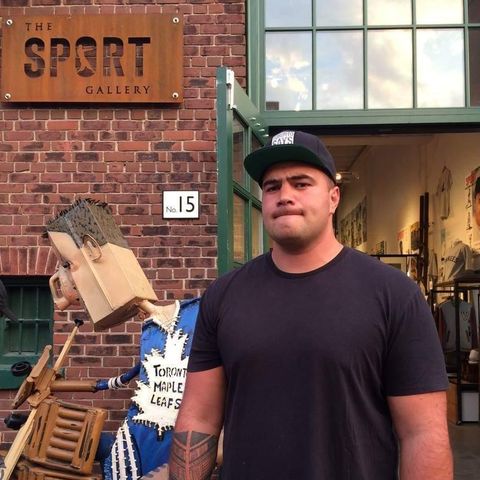
Jordaan Tuitama started thrift flipping in January after lockdown made him think differently about the way he consumed.
He says he always wanted to start his own business and knew this business should be environmentally conscious. But he wasn’t able to afford to study business at university or invest tens of thousands of dollars into something either. At first, he thought about getting into the business of reselling sneakers, but even that was too expensive to break into.
“So I started off with $10, I went down to the local op shop [in Kawerau] and bought two Nike t-shirts. I bought the t-shirts for $2 each and then sold them for $20 each. So I had turned $4 into $40.”
“Creating an enterprise that supports me financially because I have no capital isn’t as bad as it sounds,” he says. “I don’t have capital to start a million dollar business because I live in a world where land has been stolen and used to generate luxuries and privileges passed through generations that I am merely an observer of.”
“I used thrift flipping as an affordable model to help me get started.”
Jordaan’s Instagram page @creativetaro prominently sells sports wear like rugby league jerseys and some designer and New Zealand made clothing. The prices range anywhere from $30 for a Wrangler button-down shirt to $160 for a 1995 New South Wales rugby league jersey.
He says his earnings vary week to week. “On a good one I could make $200, but on others it could be $10. But there are people who work a lot harder than I do who have made it their full time thing.”
Thrift flipping as a form of kaitiakitanga
Aside from thrift flipping helping Jordaan put food on the table for his family, he says his main driver is wanting to be a “good kaitiaki”. Kaitiakitanga is a Māori concept of protecting and looking after the environment, a form of guardianship.
He says resellers are aware of the tonnes of waste that is produced by fast fashion every year, so they have stepped in to help mitigate this.
“It’s a real valid point about whether we're taking something away from people who can’t afford to go to the mall to buy a jacket, so they go to an op shop. I absolutely understand that.
“I used to be the kid who had to go to the op shop. But in my experience, there is just so much stuff.”
“I talk to the ladies at my locals and they say when bags of clothes are left at their doors over the weekend they are overwhelmed with people’s junk,” he says. “Sometimes perfectly good stock ends up in the dump.”
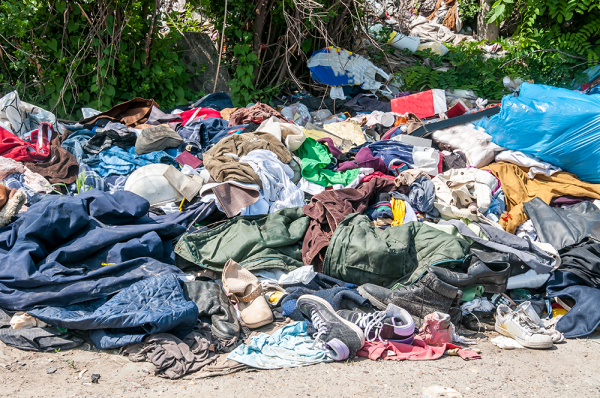
Clothing clogging up our landfills is one the fastest growing causes of waste in New Zealand.
It’s reported that op shops are having to spend thousands of dollars each year on commercial disposal fees for clothing that is damaged, or unable to be sold. Stuff reported in 2019, clothing sent to Wellington's Southern Landfill has doubled since 2009, and it's estimated that 25 percent of this could have been worn.
“I know that I have been criticised for reselling second hand clothing. But for me, I feel I am still practising my beliefs of kaitiakitanga, and understanding that I need to be taking care of papatūanuku. For me, that is enough to tell myself that what I am doing is okay.”
Like others, Jessica* says the practice of thrift flipping is unethical. “These people are deliberately going to these stores, taking only the good things that people want to buy when they see it severely undervalued by these second hand stores. Then they sell them online for 200 percent jacked up prices,” she says.
“Then only the subpar things are left.”
Jessica thinks the practice is classist because she says it takes clothing out of the hands of low income communities and makes them only accessible to people with disposable income. Then instead of that extra profit going to charity, it is absorbed by upper or middle class resellers.
“There are also issues of access. When you take things like this out of an op shop, and put them online, there are large numbers of the community that don't have access to the technology that allows them to access these stores, and they deserve the good clothes too.”
While Jordaan says the trend is contributing to “slow fashion”, Jessica says the elevated prices make the business model of thrift flipping "exploitative", and is partly why op shops are now more expensive.
Are New Zealand op shops getting more expensive?
While there is no official record of op shop prices increasing, there is ample anecdotal evidence of customers noticing a change.
To get a gauge of whether people on low or fixed incomes are struggling to access second hand stores, I posted in a Facebook group of people who rely on Work and Income benefits - living allowances that have been widely criticised by poverty advocates as woefully inadequate.
Within 24 hours of making the post, there were over 200 responses.
“I used to love op shopping but now I can’t afford to do it,” says Hope.
“The Salvation Army prices are insane compared to how they used to be. Sad considering they’re there to support those in need,” says Deanne Ford.
“I don’t even bother with them now. It’s cheaper to buy brand new or online,” says Steph Brooke.
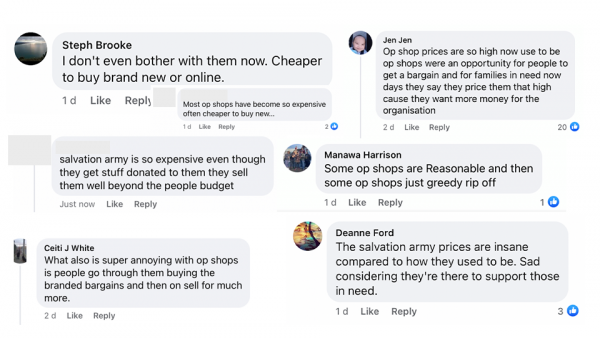
With this insight, I decided to ring up three different charity stores across New Zealand. Wellington City Mission, The Salvation Army and Hospice Taranaki (Te Rangimarie Hospice).
I wanted to know:
- Are charity stores consciously raising their prices?
- If so, what factors are influencing this?
- And if second hand charity stores are becoming inaccessible to some low or fixed income communities, are they still serving their purpose in the community?
Here’s what they said:
“We price things as we've always priced them,” says Louise Parry from The Salvation Army.
“But inflation does keep rising and the stores run as businesses so they have to meet the costs of their overheads. But from our point of view, we keep prices as reasonable as we can.”
The Salvation Army says they are aware of thrift flipping as it's not a new thing - antique dealers have been finding treasures in charity stores for years. But she says the practice doesn’t affect the way they do their business.
“We know people buy things with reselling in mind. But we can't do anything about that. Once they've bought the goods in our store, that’s where it ends for us.”
“But we're not upping our prices or anything based on what we think people are doing with the goods. As far as I'm concerned, it's not really affecting us.”
When I asked Jeremy Neeve the general manager of social enterprise at Wellington City Mission if stores like the City Mission op shops are becoming gentrified he said, “to a degree, definitely.”
“The range [of people] that come in are probably quite different to 10 years ago. But I think part of that is because we are offering better products now. People are donating more good clothing and products that we didn’t have as much of back then.”
Jeremy says when things are donated they are organised and priced individually by volunteers at each store - there are no set guidelines for what things should be priced.
“They get to know what products sell for. But it is always about walking a fine line because the market sets the price,” he says.
“If something is too expensive and it doesn’t sell, we drop it down. The whole idea of op shops is to move the product through and make a profit for the respective charities.”
This brings us to an important question in this debate: what is the purpose of a charity store? Is it to provide affordable goods for the community or raise money for charity? Or both?
“They are so expensive. I don’t get why though as they get EVERYTHING for free,” says Amanda Gage Brown. “Why the need for high prices?”
“I’m confused,” says Sarah. “I thought charity stores were meant to be helping the underprivileged. But they sell things they get for free for prices that we can’t afford. You may as well buy the same thing new from K-mart for the same price.”
“I think they are getting greedy and taking advantage of people,” says Lauren Jones.
This confusion and frustration was shared by several others on the same Facebook post
If the market sets the price as Jeremy says, and the market is shifting to customers who have more money to spend, does that mean charity stores are now just catering to the middle class? And is that fair?
Paul Lamb, the chief executive for Hospice Taranaki, says “many people don't understand [their] business structure”.
“It's about getting a strong return for the Hospice group.”
The Hospice website says their 125 Hospice stores around the country sell second hand goods to fund the cost of providing palliative care, free of charge, to their local communities. Paul says they need to raise $4.5 million each year because the Ministry of Health funds less than half of their health care services.
“When people say, ‘you get the donations for free, why don’t you sell them for really cheap or free?’ Well it just wouldn’t work like that,” he says.
“We wouldn’t want to sell a dining room chair for $5, if someone else could pay $25. We are needing to be in a position where we do realise the real value of items, so we can get the most return for our cause.”
Paul says the tough question here is: “Do charities have the obligation to provide donated goods at the lowest price possible, because they'll always be people that are challenged financially?”
“I appreciate that other charities are at the sharp end of the social services sector, but for us, our obligation is to get the best return for every donation. People have donated to us because they want to help us raise revenue to keep providing these important services. That’s our priority.”
Which is why, in the last four years, Paul says Hospice Taranaki stores are realigning their pricing, but also realigning the quality of their product. “So we can offer more value for more money. But that range of product will always be there. I can think of antique items we sell for hundreds of dollars, and also items we sell for 50 cents.”
Louise says it would be misleading to say charity stores are no longer catering to lower income communities.
“If people are really struggling, we do an assessment with them, we check that they're getting everything they're entitled to in terms of benefits, and we work with them on budgeting advice.
“We don't want people to go without basic things like food or warm clothing, so we would always help where we can.”
She says some of the donated clothing is given to community ministries to be handed out to those who are struggling. Last financial year $519,000 worth of goods were given away from Family Stores to help those in need, which is up 22 percent on the previous year, she says.
And clothing that isn’t sold, is also taken by outreach workers to the Wellington District Court for example, so people can change out of their prison uniform if they are appearing in court.
“Charity stores will always hold a really important role in the community,” she says.
“And remember the money we raise goes to the community as well.” National Family Store Manager Gareth Marshall says 90 percent of the funding raised by The Salvation Army stays in the local community; last financial year $15.95 million went back to community ministry centres.
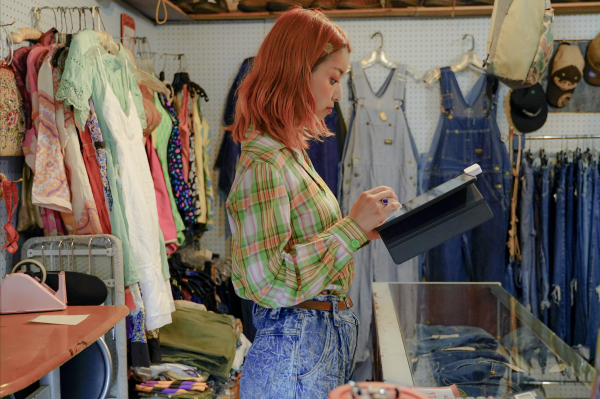
It’s clear that the popularity of second hand shopping is making some items in charity stores unaffordable for low income communities. While not single-handedly the cause, thrift flipping can have a role in this.
As a consequence, some low income communities are turning to fast fashion stores like K-Mart and The Warehouse to buy their clothing because these large conglomerates can make, package and ship a button-up cotton shirt across the world for $6. Whether that says more about the inaccess of op shops or the access of fast fashion is up for debate. But the reality is, it’s a problem.
So what is the solution?
Should there be different tiers of charity stores for different incentives? Should there be discount vouchers for low income communities? Should charity stores be restricted on what they can price items? Should the middle class just stop shopping at charity stores altogether?
Louise says boycotting or choosing not to donate to charity stores would also harm vulnerable communities because it would minimise the funding of community projects like food banks and drug and alcohol rehabilitation. “I would hate to see that happen,” she says. “If second hand shopping went out of Vogue it would affect the most vulnerable in society, and the environment.”
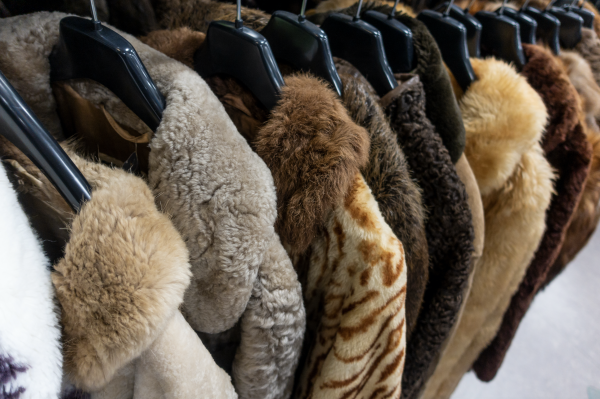
So what do we do, is it possible to resell second hand clothes ethically?
”Yes because it’s about recycling all the clothes we already have. But also being conscious about how we do it. I don’t buy homeware or kids clothes, that’s my line,” says Jordaan.
“I don't think so,” says Jessica. “Thrift flipping is just a different type of consumerism.”
“I can’t make them stop. But if I was going to be able to make them do anything, I would say you shouldn't be allowed to jack up your prices more than 50 percent more than what you bought it for.”
But Jordaan says that marked-up prices can be justified because it takes time for a reseller to look through racks to find good pieces, as well as advertise and sell them online.
“Some people don’t want to look through the racks, so they don’t mind buying it off someone for a higher price. Plus resellers have an eye for it.”
Jessica admits that the issue isn’t black and white and there are bigger ethical issues to care about. “I'm definitely not saying that people don't deserve an income, I understand why people do it, ” she says. “And I respect that they're trying to promote ideas of sustainability, but there are still issues that need to be acknowledged, and at least worked out so that we can make it a better process.”
*Not her real name.